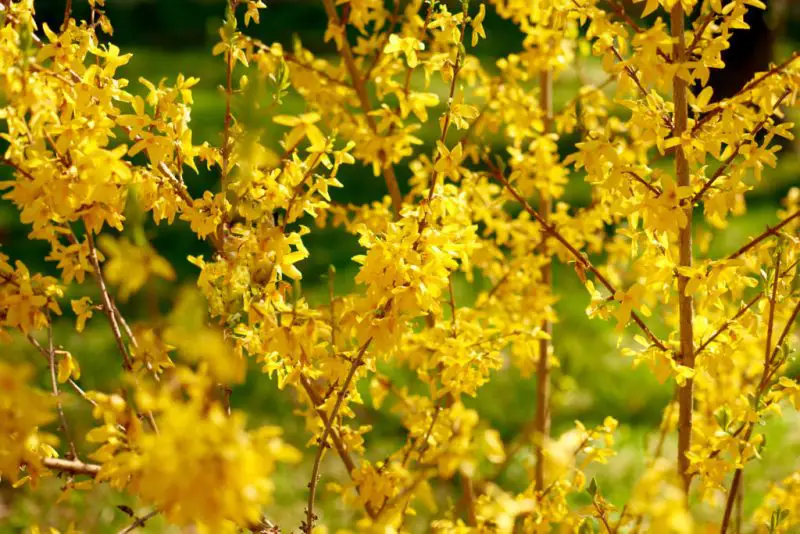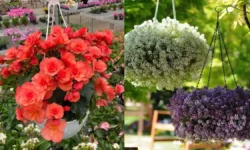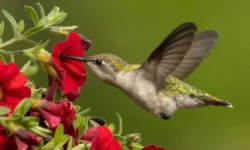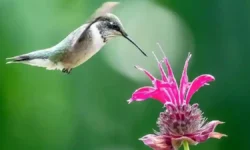Forsythia is one of the most beloved spring shrubs, celebrated for its cheerful yellow flowers that brighten gardens even before most plants break dormancy. This fast-growing, deciduous shrub adds a splash of vibrant color to landscapes, but without proper care, it can quickly lose its graceful arching shape and the intensity of its blooms. Trimming at the right time is essential not only to keep its natural form but also to maintain the rich yellow color that makes forsythia a garden favorite.
Improper pruning can lead to a tangled mass of old wood, fewer flowers, and a misshapen appearance that detracts from its beauty. By understanding the plant’s growth habits and trimming it at the right moment, you can enjoy a perfectly shaped shrub that bursts with vibrant color each spring.
Table of Contents
Understanding Forsythia’s Growth and Flowering Habits

Forsythia is known for its vigorous growth, often sending out long, arching canes that can reach up to ten feet tall if left untrimmed. Its flowers form on old wood, meaning that buds for the next year’s blooms are produced on stems that grew during the previous summer. As soon as flowering finishes in spring, the shrub begins setting buds that remain dormant until the following season.
This growth habit makes timing crucial because trimming at the wrong time can remove the flower buds for the next spring. The plant’s natural habit is to grow outward in a fountain-like shape, and trimming incorrectly can cause it to lose this graceful form. By pruning properly, you can encourage the plant to maintain its natural elegance while ensuring it has plenty of new wood to support abundant flowers.
Older stems eventually become less productive, producing fewer blooms and sometimes shading younger shoots. Encouraging a mix of older structural canes and younger, more vigorous stems helps maintain both the shrub’s shape and its vibrant color.
The Best Time to Trim Forsythia for Perfect Shape
The ideal time to trim forsythia is immediately after it finishes flowering in spring. Pruning during this window allows you to shape the plant while preserving the buds that will form for next year’s blooms. Trimming right after flowering gives the shrub the entire growing season to recover, produce fresh wood, and set buds for the following spring.
Waiting too long, especially into summer or fall, risks cutting off the developing flower buds. Trimming in winter is even more damaging because it removes nearly all the buds that were formed during the previous growing season, leading to few or no flowers in spring.
The earlier you trim after the blooms fade, the better the plant responds. This early timing ensures that the plant has maximum time to produce healthy new shoots, which will carry next year’s vibrant flowers.
Shaping Forsythia for a Graceful Appearance
Forsythia naturally grows into a fountain-like shape with arching branches. Preserving this form requires selective pruning rather than shearing. Cutting back the oldest canes at the base opens up the center of the plant, allowing younger stems to grow freely. This encourages a more balanced, airy structure while preventing overcrowding, which can lead to reduced flower production.
Trimming the tips of the longest canes helps control the shrub’s size without ruining its natural flow. Avoid trimming all branches to the same length, as this gives the plant a stiff, unnatural appearance. Instead, focus on maintaining the arching habit by cutting individual stems at different lengths to mimic the plant’s natural growth pattern.
By selectively thinning out older stems, sunlight can reach the inner branches, promoting healthy growth throughout the entire shrub. Good air circulation also helps prevent fungal diseases, keeping the plant vibrant and healthy.
Encouraging Vibrant Yellow Blooms Through Proper Pruning
Vibrant flower color is directly linked to the health of the plant and the age of its wood. Younger stems typically produce the brightest, most abundant flowers, while older, woody canes often produce fewer blooms. By trimming out some of the oldest stems each year, you encourage the plant to generate vigorous new canes that will bloom heavily the following spring.
Removing old wood also helps the plant allocate energy more efficiently, directing nutrients to younger, more productive stems. This results in fuller flower clusters and a richer yellow color. Over time, neglecting to prune leads to a tangle of aging branches, which not only reduces flower quantity but also dulls the overall vibrancy of the blooms.
Consistent, well-timed pruning ensures that a steady supply of new wood is always present, which keeps the shrub flowering profusely year after year.
How Much to Trim for Best Results
The amount of trimming depends on the age and condition of the shrub. For well-maintained forsythias, cutting back about one-third of the oldest canes each year is enough to maintain a healthy balance between old and new wood. This approach keeps the shrub from becoming too dense while encouraging continuous flowering.
If the plant has been neglected for several years and has become overgrown, more aggressive pruning may be necessary. In such cases, cutting all canes back to six to twelve inches from the ground after spring flowering can rejuvenate the shrub. While this drastic method sacrifices flowers for the following year, it restores the plant’s health and shape in the long term.
Younger shrubs require less trimming, focusing only on removing dead or damaged stems. Over-trimming young plants can slow their establishment, so light shaping is preferable until they mature.
Aftercare Following Pruning
Proper care after trimming helps forsythia recover quickly and prepare for the next flowering season. Watering deeply during dry periods supports the development of new growth, especially after a heavy pruning session. Mulching around the base keeps the soil moist and cool while preventing weed competition.
Fertilizing in early summer with a balanced, slow-release fertilizer can encourage strong shoot growth, which is essential for setting buds for the next year. However, avoid over-fertilizing late in the season, as it can stimulate soft, tender growth that may be damaged by winter frost.
Regular monitoring for pests and diseases ensures that the new growth remains healthy. Forsythia is generally hardy, but stressed plants are more susceptible to problems, which can affect flowering performance.
Maintaining Forsythia’s Shape Year After Year
Consistent annual pruning keeps the shrub looking neat and encourages abundant blooms. By removing a portion of old wood every year, you maintain a balance of young flowering canes and older structural stems. This method prevents the plant from becoming overgrown while preserving its characteristic arching shape.
Allowing the plant to grow unchecked for several years makes reshaping more difficult and often requires drastic rejuvenation pruning, which temporarily sacrifices flowers. Regular trimming right after flowering each spring is the best way to maintain both perfect shape and vibrant color.
Common Mistakes That Reduce Bloom Quality
One of the most common mistakes is trimming at the wrong time of year, particularly in late summer, fall, or winter. Cutting during these periods removes buds that have already formed, resulting in fewer flowers the following spring.
Another frequent mistake is shearing the shrub into a formal hedge shape. While this may seem like an easy way to control size, it destroys the plant’s natural arching habit and leads to dense outer growth that shades the inner branches, reducing flower production.
Over-pruning young plants is also problematic. Forsythias need time to establish strong root systems before heavy trimming. Too much cutting too soon can stunt growth and delay the plant’s full blooming potential.
FAQs About Trimming Forsythia for Shape and Color
When Is the Best Time to Trim Forsythia for the Best Shape?
The best time to trim is right after spring flowering. Pruning during this period allows you to shape the shrub without removing next year’s buds.
How Does Proper Pruning Improve Forsythia’s Color?
Trimming old wood encourages new, vigorous stems that produce brighter, more abundant yellow flowers, enhancing the shrub’s overall color vibrancy.
How Much Should You Trim Each Year to Maintain Shape?
Cutting back about one-third of the oldest canes annually keeps the plant open, airy, and naturally shaped while promoting healthy flowering canes.
Can You Shape Forsythia in Summer or Fall?
Pruning in summer or fall is not recommended because it removes developing flower buds, reducing or eliminating blooms the following spring.
What If Forsythia Becomes Overgrown or Misshapen?
For severely overgrown shrubs, rejuvenation pruning after spring flowering—cutting all canes back to about a foot—restores shape and encourages healthy growth.
Conclusion
Trimming forsythia at the right time is essential for maintaining its perfect shape and vibrant yellow color year after year. Because the shrub blooms on old wood, pruning immediately after spring flowering is the best way to preserve flower buds while encouraging healthy new growth. Selective thinning of older stems and careful shaping help maintain the plant’s natural arching habit, ensuring it remains both beautiful and productive.
With proper timing, thoughtful technique, and consistent care, forsythia can continue to brighten your garden each spring with a stunning display of golden flowers. A well-maintained shrub not only offers early-season color but also serves as a striking focal point throughout the growing season.






